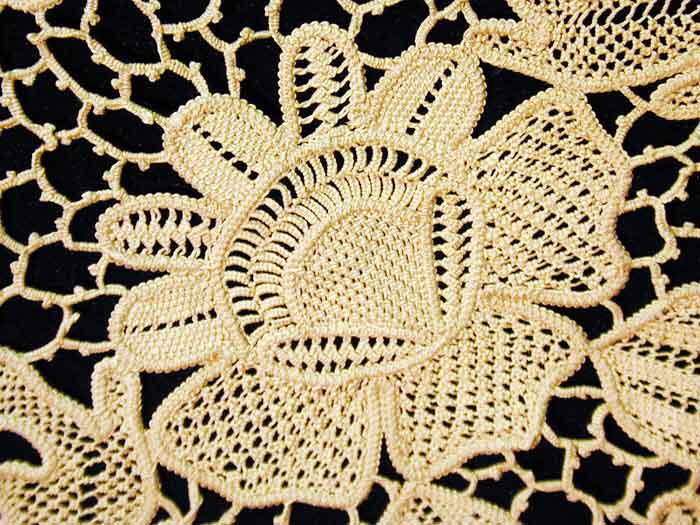ROMANIAN LACE COSTUME
And
SENTIMENTAL EMBROIDERIES
October
1st - February 4th, 2006

Slide Show
A relatively new lace, only popular since the 1950s, its origins can be
traced back to the early 20th century. Romanian Lace, also referred to
as Romanian Point is part of a family of tape laces, the earliest
dating date back to 17th c. Italian Mezzo Punto. Today,
Battenberg Lace is the name assigned to most laces of this type where a
machine made tape defines the design and needle lace infillings define
the texture.
A unique form of tape lace, Romanian Point uses the needle and crochet
hook to incorporate techniques borrowed from other textile forms,
namely crochet, weaving, wrapping and knotting. Always considered an
innovative technique, new infilling and braid stitches are continually
being created.
The uniqueness of Romanian Point is that it is entirely hand made. The
tape is hand crocheted, and the filling stitches incorporate needle
weaving stitches in addition to the normal buttonhole stitches
found in other tape laces. While the braid can take many forms, the
unusual characteristic is that the forming thread can be pulled from
either end. The best of these laces are finished on both sides, all
thread ends carefully buried in he crocheted tape. The structure is
typically firm, with tightly twisted threads, like those used in
macrame and sailor’s work, used.
Sylvia Murariu must be given credit for popularizing this lace through
her writings, teachings and creative erergy in producing her own
innovative designs and stitches. Her books, first published in
1966, were the first to document this lace and insure its richly
deserved heritage.
Lacis
Museum of Lace and Textiles lacismusuem.org

